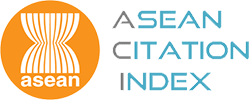ASSESSING THE STANDARD OF CARE OF DOCTORS IN EMERGENCY DEPARTMENTS
DOI:
https://doi.org/10.32890/uumjls2025.16.1.2Abstract
Working in emergency departments appears to be challenging as the doctors stationed here encounter obstacles that may not be faced by other doctors. This includes the need to attend to a high number of patients, the lack of manpower and resources, as well as the pressing situation of being in an emergency. This condition may be more apparent in public hospitals that are usually overcrowded with patients with various illnesses that require urgent treatment. Occasionally, claims of medical negligence have been filed against doctors and hospitals by patients seeking medical treatment in emergency departments. An issue, therefore, arises on the standard of care required of doctors as has been imposed by the law on working in emergency departments. The question is whether the calamitous situation that doctors in emergency departments encounter is acknowledged by the law as a possible defence against the allegation of negligence in Malaysia. From the cases analysed, it is concluded that doctors in emergency departments are expected to exercise the skill of any other reasonable competent doctor in similar circumstances. As such, doctors and hospitals should strive to provide the best medical treatments according to the situations of each case in order to avoid liability in negligence. It is hoped that the findings of this research would assist doctors working in emergency departments in discharging their daily duties according to the standards imposed by law. To fulfil its objective, this research employs legal and doctrinal methods in which the analysis and arguments have been based on the written literature, which has been mainly case laws from Malaysia and the United Kingdom, as well as textbooks and journals.
Additional Files
Published
Issue
Section
License
Copyright (c) 2025 UUM Journal of Legal Studies

This work is licensed under a Creative Commons Attribution 4.0 International License.










